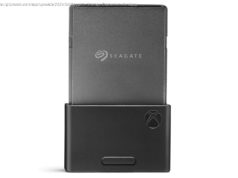Planning a movie night in your backyard? Invite some friends, grab the popcorn, and fire up your favorite flick with one of these top-pick projectors. Here’s how to choose the right one.
If you’d love to watch movies in the backyard—whether bundled up with the patio heater turned on or enjoying balmy evening temps in spring or summer—it’s easier to pull off than you might think. Although you can use virtually any projector on the planet to turn an outside wall into a cinema, it wasn’t long ago that almost none had all the right features to make it easy. Today, a growing number do. We’ll take you through our favorite tested picks for outdoor projectors, followed by a detailed buying guide to what to look for. Most of these specific models fall in a category we call “room-to-room portables.” What moves conveniently to another room also moves conveniently to the backyard. In addition to being light enough to carry over short distances, room-to-room portables include robust audio designed to offer both high enough volume and quality so you won’t have to lug a separate sound system outside, as well. They also typically have features like auto-focus to help you set up quickly, and most offer streaming, so you can skip carrying a video source, as long as you keep close enough to your house so you can connect to your network by Wi-Fi. There are even some designed particularly for outdoor use, complete with a level of water and drop resistance. We’ve also thrown in a portable mini projector or two—defined in part by a smaller size and a more limited audio system. But keep in mind that you still have the option of using virtually any projector you like outdoors. Note also that the price range for these models runs from $499.99 to $2,199.99 at this writing, but given the recent chip shortages and supply-line issues in this not-quite-post-pandemic era, the entry cost could rise. If even $500 is more than you want to invest in a projector, take a look at our related story with tips for putting on a backyard movie night without breaking the bank. How to Buy a Projector for Backyard Movies
So above, you have seen our favorite tested picks. As you might have gathered from our assessments of each, minding the nuances when shopping for a projector can mean the difference between an A-list experience and a B-movie one. Rule one is that every projector choice you make stems from a single decision: Do you want a permanent installation or an ad hoc setup? At one extreme, you can install all your projection equipment outdoors, fixed in place and weatherproofed: projector, video source, ancillary sound system, and screen. At the other, you can lug everything out to set up only when needed. In between, you might install, say, an outdoor screen and speakers, and carry the rest of the gear out and back as needed. For permanent setups, only the projector, the video source, and additional audio components need to be protected from the weather, and that can be easy if you have, say, an enclosed Florida room with a sliding door to the outside. With everything set up, you can just open the door to let the projector light up the screen. For anything short of permanent setup, room-to-room portables let you minimize how much you need to carry back and forth before and after every movie night. But note that you might want to store even outdoor screens inside for winter or before a storm. If you’re looking at a true, permanent outdoor installation of all the bits, we’d leave that approach to a local pro A/V installer, who can consult on your property’s specific needs for optimization, and be sure all the proper power wiring and the like is implemented safely. We’ll concentrate here on the DIY approach, in which you set up and break down all or most of your setup as needed. The Screen: How Big Should It Be? Brightness requirements for a given projector are no different outdoors than indoors. It’s all about ambient light and the target image size (which we’ll get to shortly). The ambient-light level outdoors after dark will likely be in the range between a dark room—if you’re way out in the country far from light pollution, and it’s a moonless night—and a family room at night with dim lighting. But don’t just assume that. Check your backyard at night, including on nights with a full moon, as well as when your closest neighbors have their backyard lights blazing. Then pick a projector that’s bright enough to stand up to the brightest light level you’ll use it under at the image size you want—an issue we discuss in our reviews. You can watch a movie outdoors at night even on a pocket projector that puts out 100 lumens or less, but you’ll have to huddle around a small image to watch it. If you want a true movie-watching experience, you’ll want a minimum 80-inch screen size, and preferably larger. For a comfortably watchable image at that size in dim lighting, you need a projector that puts out about 800 lumens—a level of brightness that rules out most small projectors, from pocket-size models to lightweight portable projectors. Keep in mind, also, that the highest brightness most projectors can deliver comes at the cost of image quality. Put another way: The best-quality picture mode for any given projector is generally the dimmest. Whatever brightness you need has to be for the picture mode you want to use—which is often just 40% or 50% of the brightest choice. The Screen: Just Use the Garage Door? (Spoiler: You Can, But Don’t)
You can use just about any more-or-less flat surface for a screen, including a hanging bedsheet, a garage door, or a stucco wall of your house. Seamless photography paper and even white foam board can be good inexpensive screen materials. But for the best image, you absolutely want a dedicated projector screen, and should take a look at our tips for how to choose the right screen for your projector. It’s easy to find outdoor frames for permanent, seasonal, and temporary setups, but the screen material is the more important part. The key choices are the same as for an indoor screen, starting with a spec called gain, which can increase image brightness. A 1.0-gain screen reflects light equally in all directions over a 180-degree viewing angle.






